My kids love to play Rummy so when I told them that this next game was similar, they jumped at the chance to play. Gathering the Factors, game F25 from the Math Card Games book, is a fun and interesting game.
If you or your kids are a little rusty on factors, have them try a few exercises before starting the game. For example, ask them “what two numbers multiplied together equal 8.” They may say “2 × 4” and “1 × 8″. Explain that often the factors 1 and the number itself are excluded from the list of factors. They will be for this game too. So the factors of 8 are 2 and 4. Have them try the factors of 16 [2, 4, 8] and 30 [2, 3, 5, 6, 10, 15].
For this game you will need Basic Number cards: four 0s, six 1s, twelve 2s, seven 3s, seven 4s, nine 5s, five 6s, five 7s, four 8s and two 9s. You will also need the following Multiplication Cards: 10, 12, 14, 15, 16, 18, 20, 21, 24, 25, 27, 30, 32, 35, 40 and 49.
Four people can play this game, but we just have two players today. Each player receives six basic number cards and two multiplication cards to start. The remaining basic number cards form a stock and the top card is turned over next to the pile. If a player’s basic number cards drop to less than four cards, he can draw up to six more cards from the stock.
Play is very similar to the well-known Rummy game.
You play with your hand hidden from the other players but here we have Ian’s hand on the bottom and Peter’s on top.
Ian sees that he has a 2 and 6 in his hand. These are two factors of 12, one of his multiplication cards, but he needs all factors in order to lay down the cards.
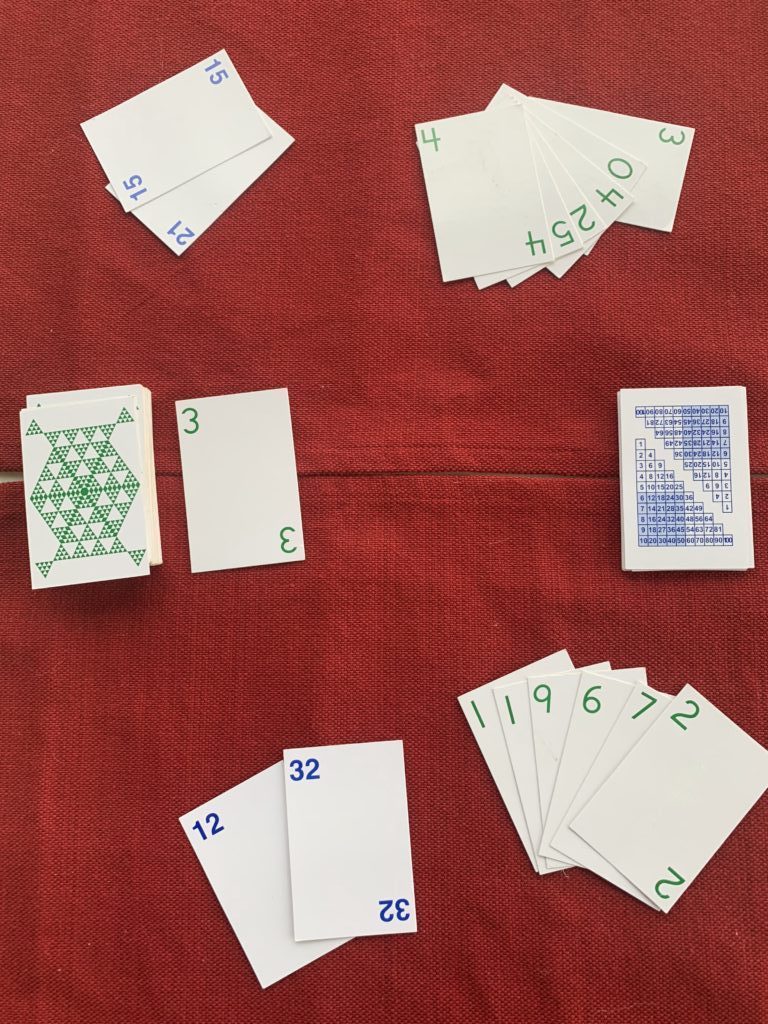
Ian decides to draw from the discard pile and takes the 3. He then discards his 1.
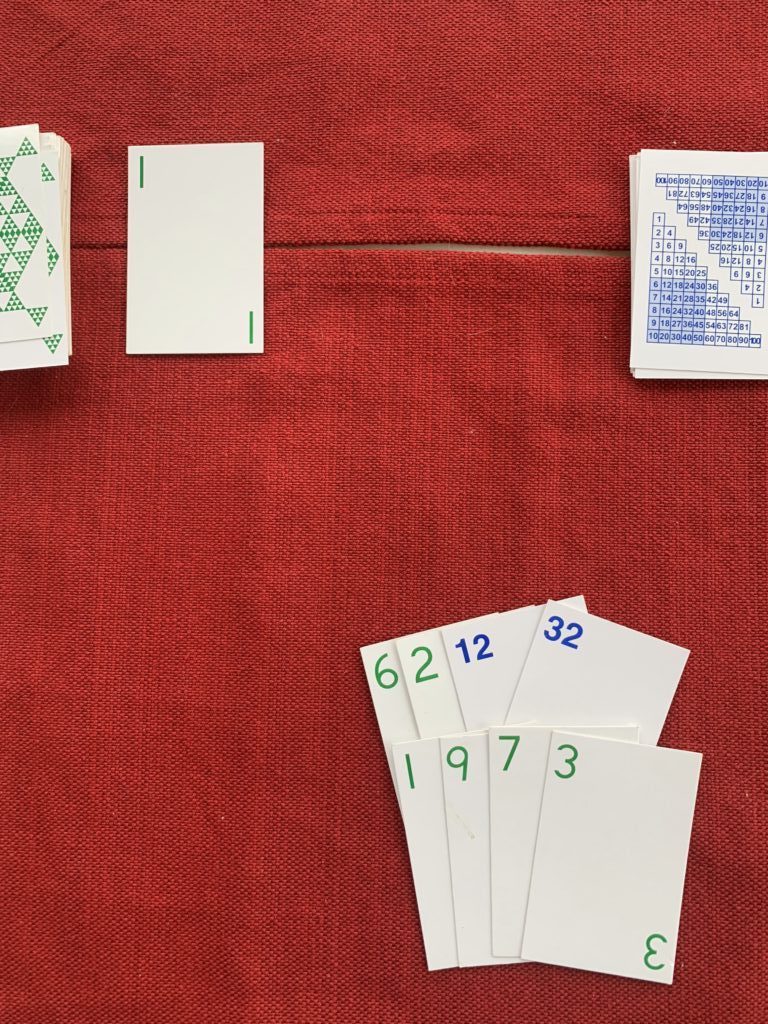

Now on Peter’s first turn he sees that he has the two factors needed for 15, a 3 and a 5. Since those are the only factors, he may lay them down. He draws another multiplication card and decided to discard a 2.
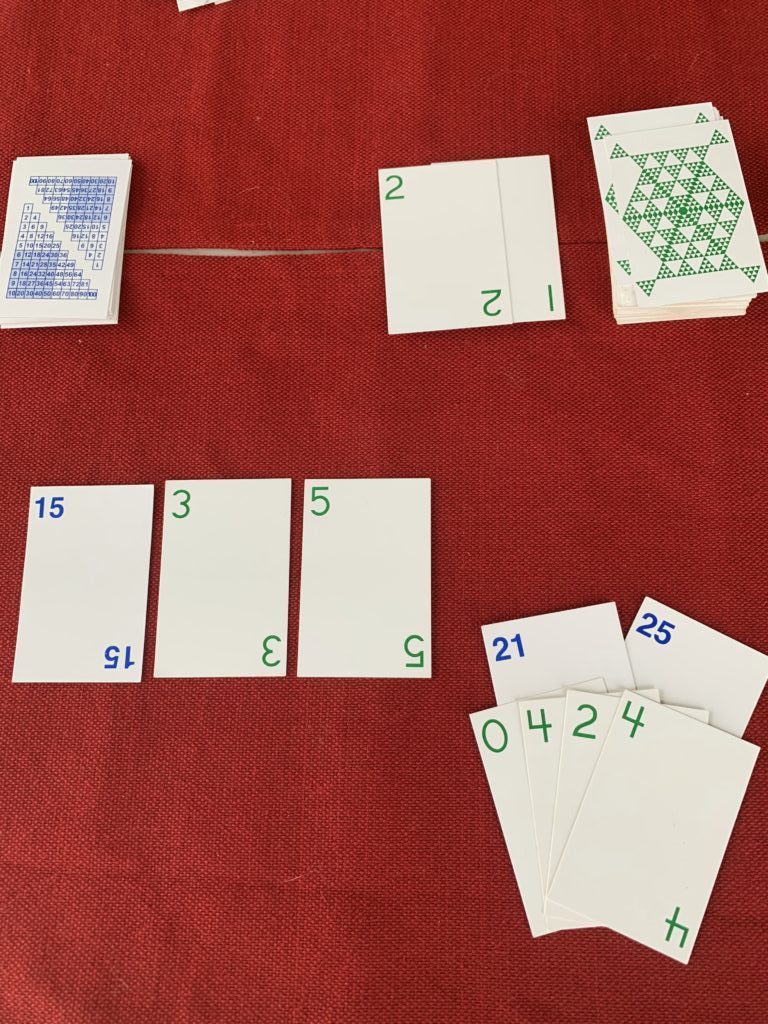

A few plays later, Peter discards a 4 and Ian realizes he can use that with his 3 for two more factors of 12. He takes it and lays down all his factors of 12. He discards a 1 and collects another multiplication card.
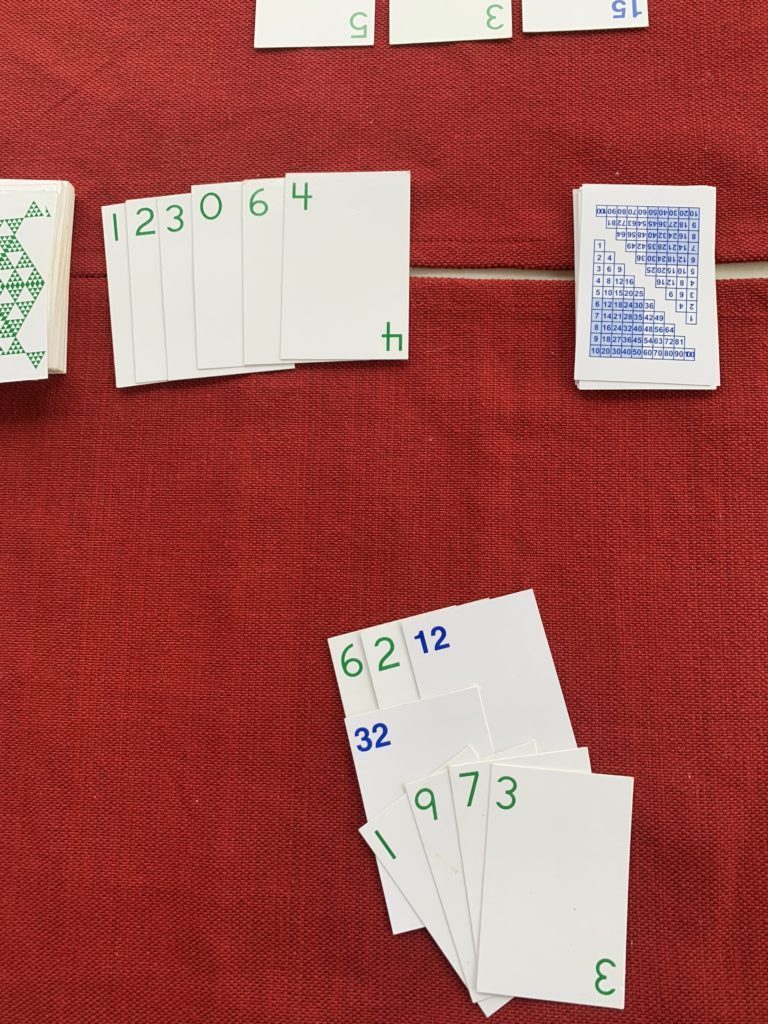

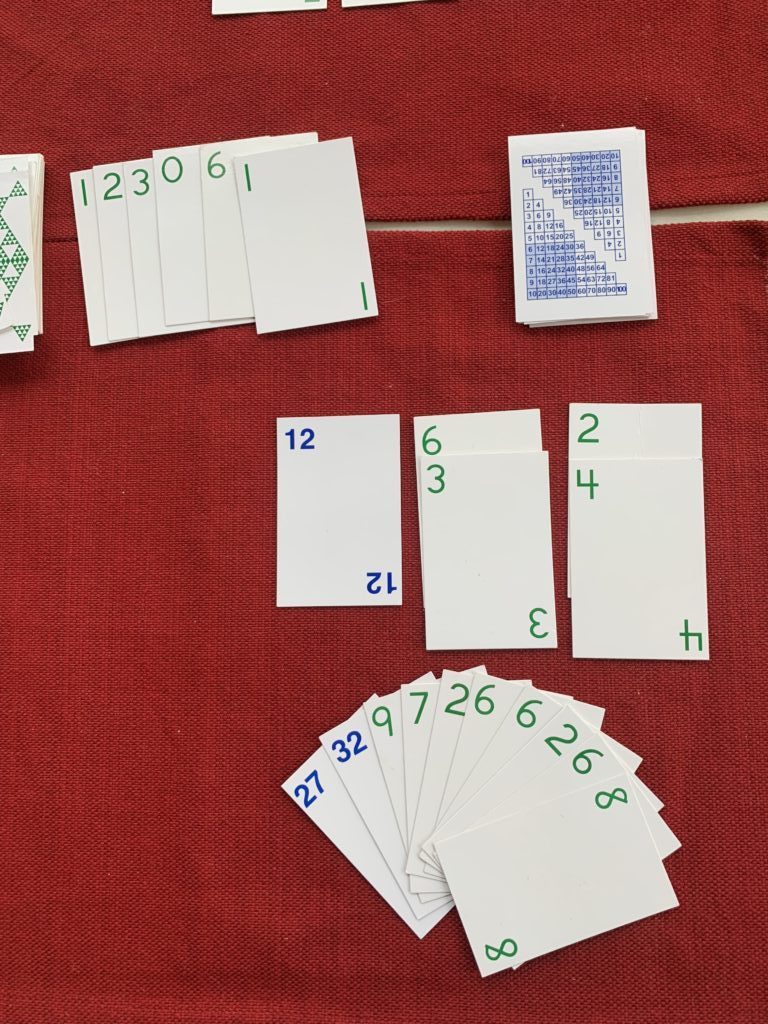

Peter has been eyeing that 3 in the discard pile and decides to take it. Because he’s taking a card part way down the discard pile, he must take all the numbers on top of it too. He is limited to twelve basic number cards in his hand. Happily, he is okay with six in hand.
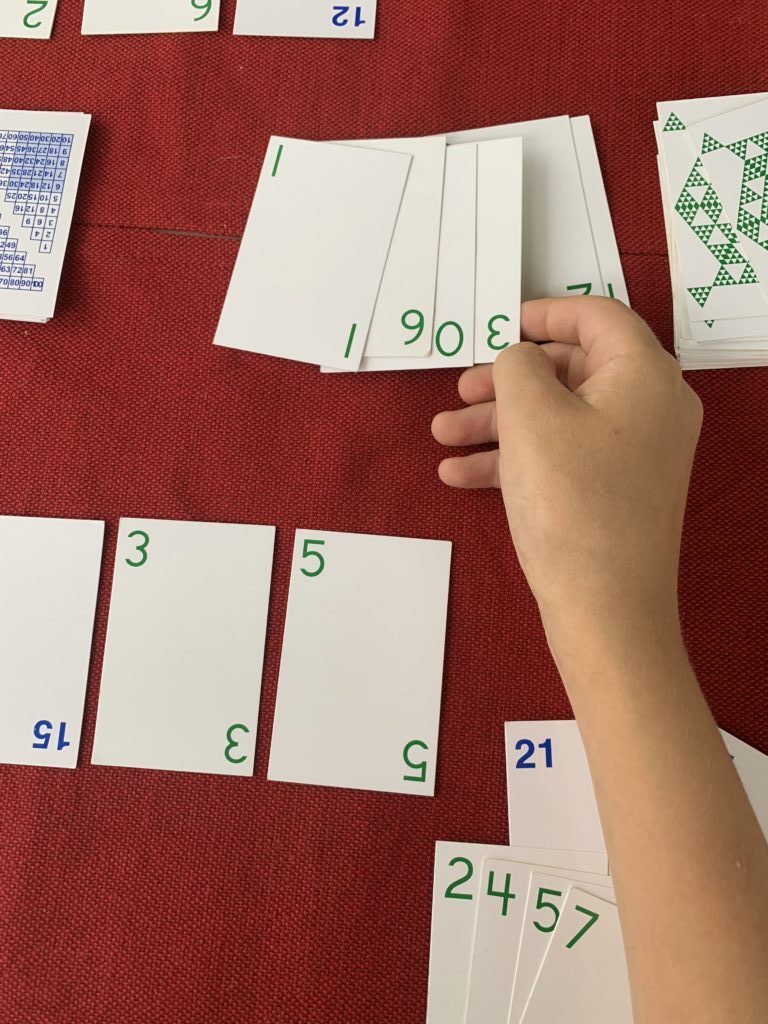

He uses the 3 with his 7 to lay down with his 21 and draws another multiplication card. He also must discard a basic number card.
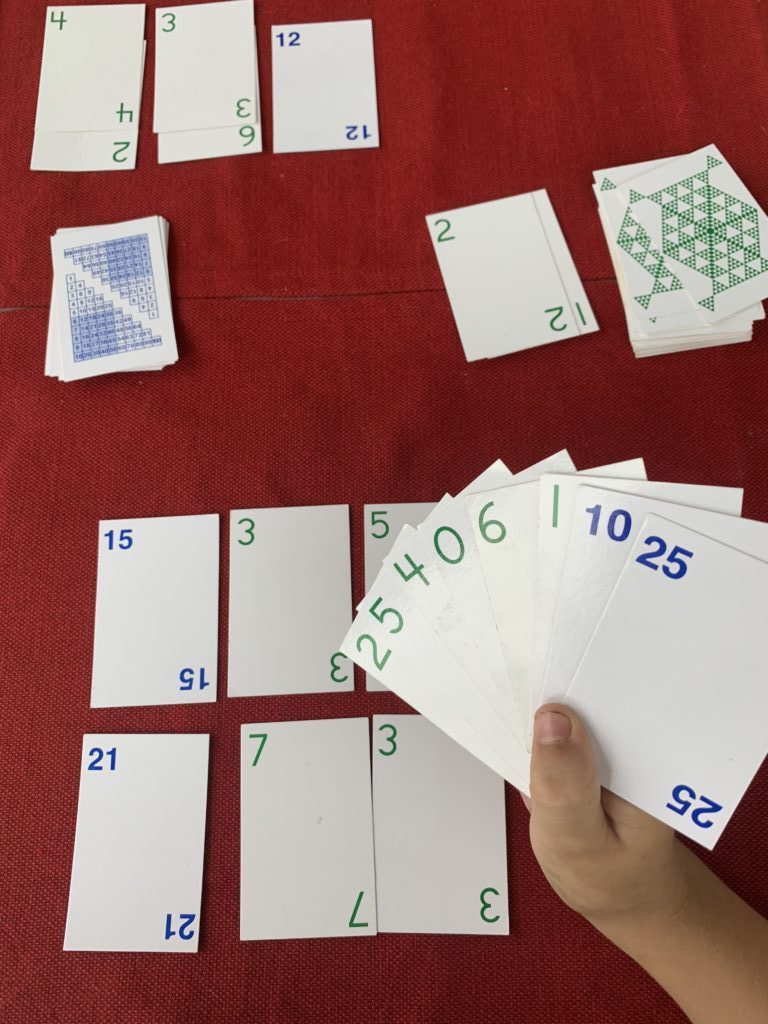

A few more hands into the game and Peter has laid down factors for 15, 21, 10 and 24. Here he is showing you that he can form the factor 12 by using a 1 and a 2. Now he has 2 × 12 = 24. This would also work for 15 with a 1 and a 5 or 10 with a 1 and 0 or any other double-digit number.
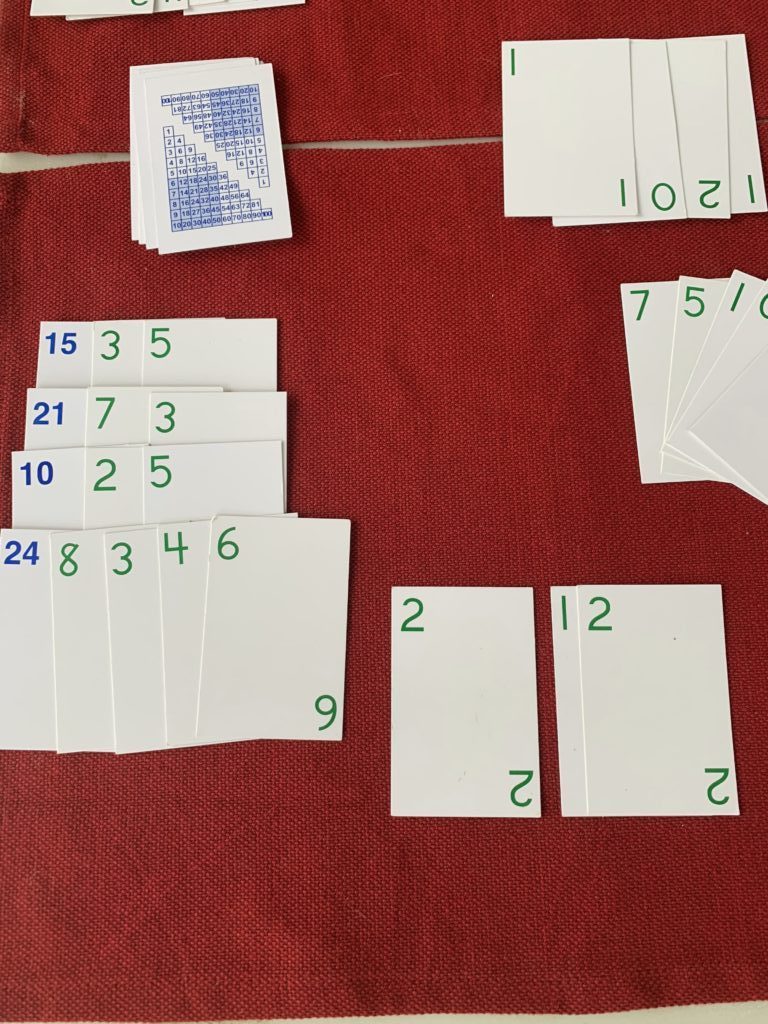

Peter wins when he runs out of basic number cards and uses the last multiplication card.
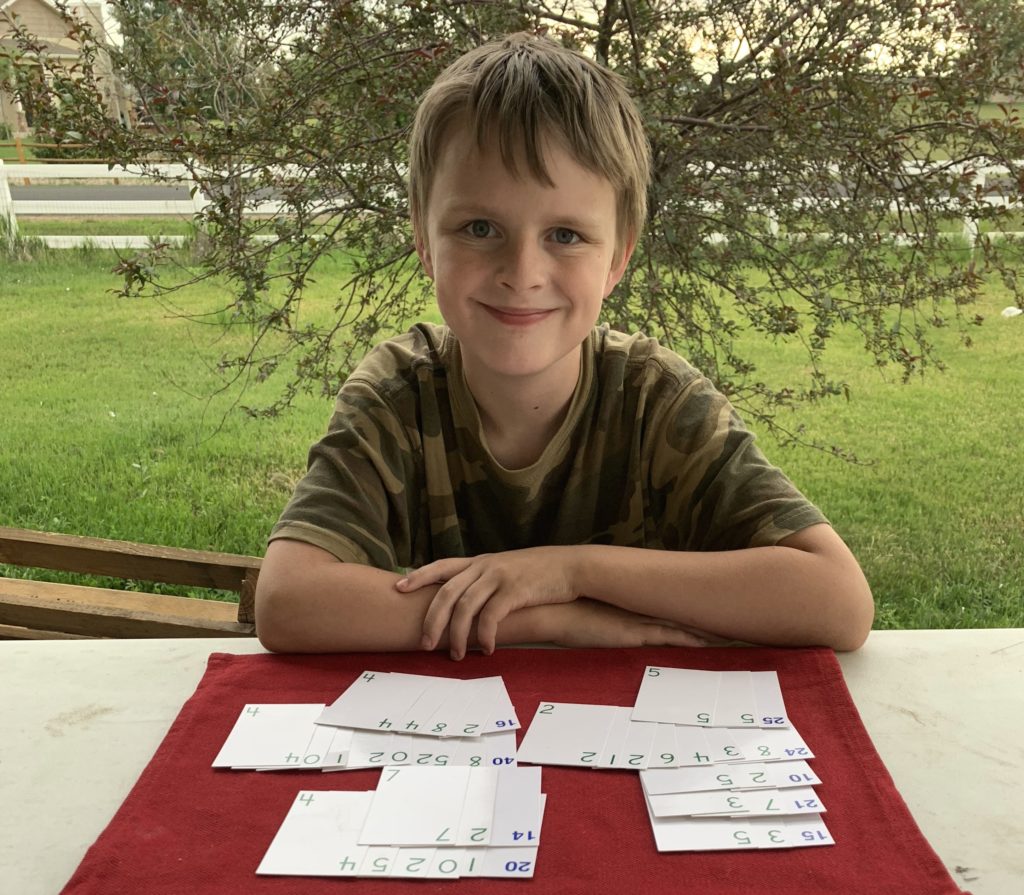

Of course, Ian wants to complete his factors by using up his remaining cards. This is what it looked like at the end.
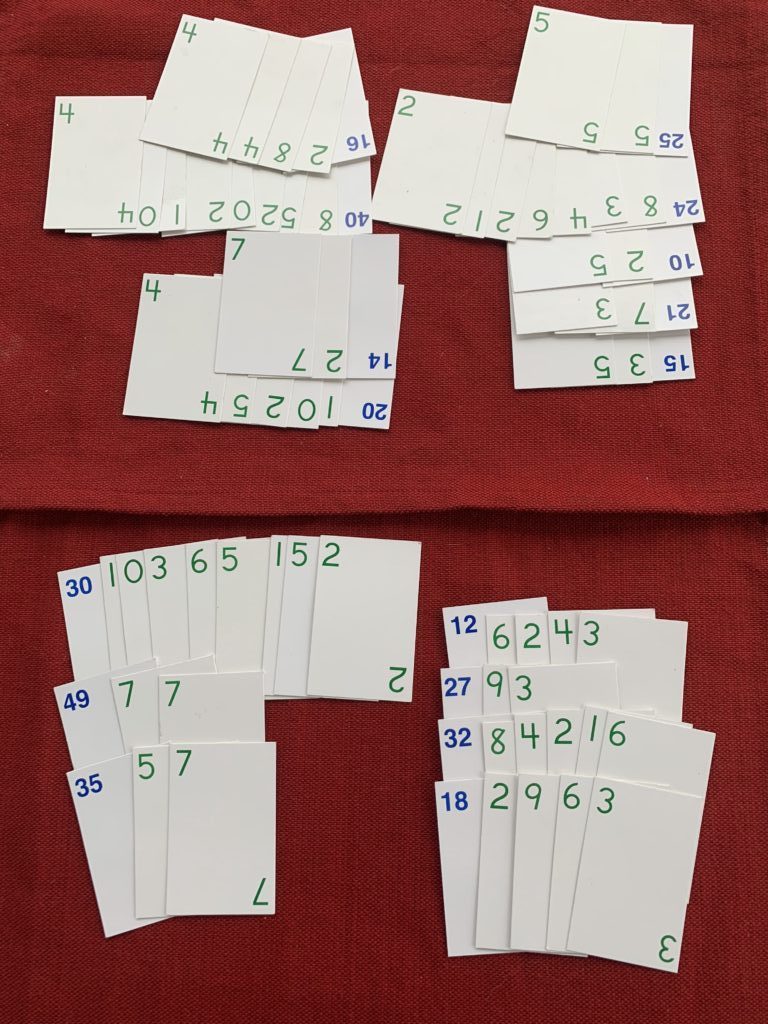

This is game that is fun in itself and it’s a fun way to keep math facts fresh over the summer! So head off and play a game…..
